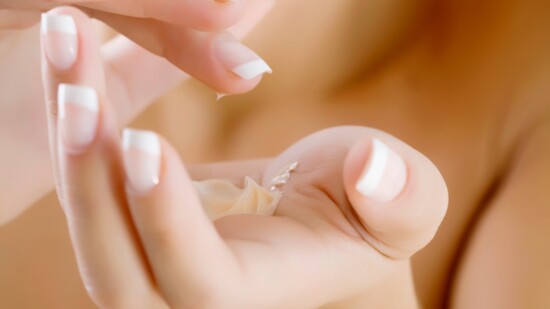One of the best things about Spring is the return of warmer weather and bright sunny days. The pleasant conditions beckon most people to leave the confines of their homes to enjoy the great outdoors.
Unfortunately, too many people fail to take adequate steps to protect their skin from hazardous ultraviolet rays that stream from the sun. Some even exacerbate the situation by spending time in tanning beds.
The result of all of this unsafe solar exposure can have serious side effects upon the body’s largest organ – its skin. From premature aging to skin cancer, too much sun is not a good thing.
To help our readers learn how to avoid sun damage, Hendersonville Lifestyle visited with one of the area’s leading board-certified dermatologists and Mohs surgeons, Dr. Margaret Mann, CEO and co-founder of Innova Dermatology. Innova offers a full range of dermatologic services in its Hendersonville office.
How often should patients schedule dermatology visits?
“We recommend patients see their dermatologists once a year. Every day, we diagnose melanomas, basal cell and squamous cell cancers – often in patients who didn’t even know that they had a concerning spot. Skin cancers, even melanomas, are completely treatable and curable when found early, so that’s why we recommend routine annual skin exams for everyone.”
At what age should patients begin annual dermatology check-ups?
“At least one in five Americans will develop skin cancer by the age of 70, so it’s never too early for your first skin check. Patients should get their first skin check in their teens to watch for worrisome moles. Patients in their late 20s should start getting annual checks, especially those with a history of tanning bed use or significant sun exposure. Finally, anyone with a worrisome spot (e.g. a changing mole, a spot that bleeds), should see a dermatologist immediately.”
What types/ages of patients are most at risk for skin cancer?
While genetics is important, the most critical factor in developing skin cancer is sun exposure. Statistics show that people who have had more than five sunburns have twice the risk for melanoma. Tanning bed use is associated with an 83% increased risk of developing squamous cell carcinoma and a 29% increased risk of developing basal cell carcinoma. Patients who tan indoors are six times more likely to be diagnosed with melanoma in their 20s.”
What are some of the common symptoms of skin cancer?
“Patients should monitor moles using the ‘ABCDE’ scale (Asymmetry, irregular Borders, multiple Colors, Diameter > 5mm and Evolving or changing). Any of these signs could indicate melanoma. Itching, bleeding and non-healing bumps or pimples could indicate basal or squamous cell carcinomas.”
What are your top recommendations for keeping skin safe and healthy?
“1. Protect your skin from the sun. Always apply a broad-spectrum sunscreen when outside and be sure to wear a wide brim had and sun-protective clothing.
2. Be gentle with your skin. Limit long hot showers and use mild soaps such as CeraVe and Cetaphil. Avoid scrubbing your skin, even if you have acne. Instead, use gentle products like CLN wash to cleanse and remove acne-causing bacteria.
3. Moisturize frequently, particularly if you have dry sensitive skin. We recommend moisturizers such as Skinceuticals Triple Lipid and Dermamade Barrier creams for most patients, and products like Eucerin Roughness Relief and Innova Xerosis Gel for those with extra dry, flaky skin.
4. Remember that a healthy life = healthy skin. We recommend that our patients exercise regularly, manage stress, eat balanced diets and avoid smoking.
5. If you have any skin issues, get the facts by seeing a board-certified dermatologist.”
What sun protection products do you suggest?
“We recommend using broad-spectrum sunscreen with a sun protection factor (SPF) of at least 30-45. Some of the most effective products are EltaMD, Pavise and ISDIN Eryfotana Actinica.”
"At least one in five Americans will develop skin cancer by the age of 70, so it’s never too early for your first skin check. Patients should get their first skin check in their teens to watch for worrisome moles."
Dr. Margaret Mann


